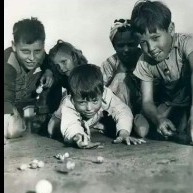-
Posts
2107 -
Joined
-
Last visited
-
Days Won
44
Content Type
Profiles
Forums
Gallery
Events
Everything posted by Joe2
-
thank you.
-
Nice, Shooters?
-
20251103_210652.mp4
-
100%
-
Perhaps someone can confirm.
-
The tin can of marbles listed is from 2001 series item number 162, for market purposes. What goes into making these marbles I am not certain, but one of these marbles, the only marble in that collection, shows some signs of adventuring or pixie dust. Super great find.
-
-

⅝" transparent brown with colored swirls within
Joe2 replied to marblemanvintagemarbles's topic in Marble I.D.'s
My Bad Jupiter -
Vacor
-

⅝" transparent brown with colored swirls within
Joe2 replied to marblemanvintagemarbles's topic in Marble I.D.'s
Vacor Neptune possibly -
Gabor possibly
-
And, yes, I remember these and the small wooden box that was sold at Toys R Us; the larger box, I believe, cost $20 or more when they finally closed. I do not remember how much the wooden box was, but I would say about $10 or so, and those were from Imperial Toy Company.
-
Whenever I find these boxes of marbles, there is usually only a handful left, but this box appears to be full with the original marbles in them. I have not counted them and probably won't.
-
richsantaclaus has on page #⁵ in most viewed Stephen Study Hall ✓it out
-
AI Overview +6 Oxblood marbles, prized for their deep red color with swirling patterns, have a history tied to both early glassmaking techniques and the evolution of marble collecting. The term "oxblood" refers to a specific type of red glass coloration, often achieved using copper compounds in the glassmaking process, which can be found in marbles from various makers. Here's a more detailed look at the history: Early Glassmaking: Oxblood glass, characterized by its deep red hue, was a sought-after color in glassmaking, often achieved through the use of copper. American Cornelians (Bricks): BuyMarbles.com says M.F. Christensen & Son Company produced "Cornelians" and "Bricks," which featured a dark red translucent base with white swirls. While the red in these marbles is often mistaken for oxblood, it's not a true oxblood. BuyMarbles.com also notes Akro Agate also produced a "Brick" marble with a dark oxblood color and white swirls, but it lacks the hand-gathered characteristics of the Christensen examples. Copper-Based Reds: The use of copper in creating red glass, while producing beautiful results, became less common as more easily produced selenium and cadmium-based reds emerged in the mid to late 1920s, ALL ABOUT MARBLES says according to a historical glass batch book. Oxblood in Other Makers: While M.F. Christensen is known for its oxblood marbles, other manufacturers like Akro Agate, Peltier, Alley, and Vitro also produced marbles featuring oxblood, sometimes as a random occurrence or in specific lines. Distinctive Features: Oxblood marbles can be identified by their deep red color, often with swirls or streaks of other colors like white, black, or even green. Some, like the M.F. Christensen "Bricks," have distinctive "9" and tail patterns. Collectible Value: Oxblood marbles, especially those with unique patterns or from specific makers, are highly sought after by collectors. Jabo Oxblood: A Facebook post reports Jabo (a marble manufacturer) produced oxblood and aventurine marbles in the early 2000s, showcasing the continued interest in this color. This video shows examples of vintage oxblood and aventurine marbles:
-
-









































